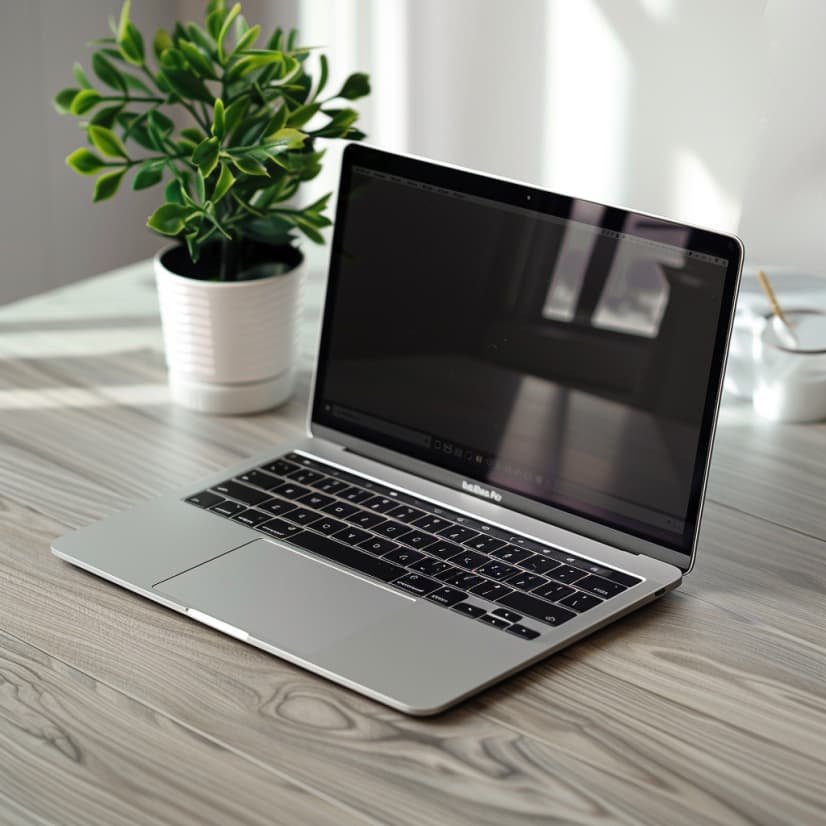Knowing your laptop’s screen size might seem like a small detail, but it plays a surprisingly big role in how you use your device. Whether you’re shopping for a new laptop, buying a screen protector, or just curious if your screen is large enough for split-screen multitasking, screen size makes a difference.
Table of Contents
But here’s the thing — Windows doesn’t just show this number front and center. So, how do you actually figure it out?
In this guide, we’ll walk through a few easy methods to check your laptop’s screen size, even if you don’t have a measuring tape handy. Let’s break it down.
Why Does Screen Size Even Matter?
Before we get into the how, let’s talk about the why.

Screen size affects more than just how big things look. It also impacts portability, comfort, and what accessories will fit. If you’re replacing a cracked screen or buying a snug case, guessing won’t cut it. And if you’re adjusting your display settings for better clarity, it helps to know your starting point.
So whether you’re setting up for remote work, gaming, or binge-watching shows — knowing your screen size helps you make smarter decisions.
Method 1: Use Your Model Number (No Measuring Required)
If you’re not in the mood to physically measure anything, this is the easiest way.
All laptops have a model number — and that model number usually tells you the screen size if you search it online. Here’s how to find it on Windows 11:
- Press the Windows key + R to open the Run dialog box.
- Type in
msinfo32and hit Enter. - A System Information window will pop up — look for System Model.
Once you’ve got the model number, type it into Google. The manufacturer’s official page or a trusted retailer will almost always list the screen size in inches right at the top of the specs.
It’s quick, accurate, and doesn’t require any tools.
Method 2: Use the Manufacturer’s Manual (If You Still Have It)
When you buy a new laptop, it usually comes with a booklet — or at least a downloadable PDF — that lists all the specs. Somewhere in there, probably under a section called “Display” or “Technical Specifications,” is the screen size.
It might not jump out at you, especially if it’s buried under a bunch of jargon. But look for a number followed by “inches,” like 15.6″ FHD display — that’s what you need.
Just keep in mind: not everyone keeps their manuals around, and even fewer bother opening them. So while it works, it’s not the most convenient method.
Method 3: Manually Measure Your Screen Diagonally
If you want to be precise — or if your model number search didn’t help — there’s always the old-school way: measuring the screen yourself.
Use a ruler or measuring tape and place it at the bottom left corner of the display. Stretch it diagonally to the top right corner of the screen. Only measure the actual display — don’t include the bezel (the black border around the screen).
If your measurement reads 15.5 inches, you probably have a 15.6-inch laptop, since manufacturers usually round to the nearest tenth.
This method is super reliable, but only if you measure correctly. If your tape isn’t straight, or if you start from the wrong edge, your result could be off by more than you think.
How to Check Your Screen Resolution in Windows 11
Now that you know how to find the screen size, let’s talk about screen resolution. This tells you how many pixels your screen can display, and it directly affects how sharp and clear everything looks.
Checking it is simple:
- Right-click anywhere on your desktop.
- Click Display settings.
- Scroll to the Display resolution section.
Here, you’ll see something like 1920 x 1080 or 2560 x 1440. That’s your current resolution — width by height, in pixels.
You might also see the word “(Recommended)” next to one of the options. That means Windows thinks it’s the best resolution for your display, and in most cases, it is. If things look blurry or stretched, you might be using the wrong resolution.
Screen Size vs. Screen Resolution: What’s the Difference?
It’s easy to confuse screen size with resolution — but they’re not the same thing.
- Screen size is the physical diagonal measurement in inches (like 13.3″, 15.6″, or 17.3″).
- Screen resolution is the number of pixels on that screen (like 1920×1080 or 4K).
Think of it this way: you could have two laptops with the same screen size, but one might be sharper than the other because it has more pixels packed into the same space.
So just because a screen is big doesn’t always mean it looks better. A 13.3” laptop with a high-resolution display might look sharper than a 15.6” laptop with a lower resolution.
Common Mistakes When Measuring Screen Size
If you’re using a ruler or tape measure, here are a few things to watch out for:
- Only measure the actual display — not the frame around it.
- Always measure corner to opposite corner in a straight diagonal line.
- Make sure the measuring tape is flat and not angled.
- Don’t guess or round too generously — even small differences matter for accessories.
Taking a few extra seconds to measure properly can save you from buying the wrong case, screen protector, or bag.
Popular Laptop Screen Sizes
Here’s a quick overview of the most common laptop screen sizes you’ll find today — and who they’re best for:
| Screen Size | Best For |
|---|---|
| 11.6″ – 13.3″ | Travelers, students, high portability |
| 14″ | Balanced size and portability |
| 15.6″ | General use, movies, multitasking |
| 17.3″ | Creative work, gaming, video editing |
Lately, larger screens like 15.6″ and 17.3″ are trending, especially as more people work or study from home. But smaller laptops still have a place for those who are always on the move.
Final Tip: Look for Your Specs Online
Still not sure? One of the most underrated tools is simply Google. If you know your laptop’s brand and model number, just type that into a search bar followed by the word “specs” — something like:
Dell XPS 13 9310 specs
Chances are, you’ll get an official page listing the display size, resolution, panel type, and more. It’s quick, reliable, and takes all the guesswork out of the equation.
Conclusion
Finding your laptop’s screen size in Windows 11 doesn’t have to be a mystery. Whether you use the model number, measure it yourself, or check your manufacturer’s specs, it only takes a few minutes.

Understanding your screen size and resolution helps you make better decisions — whether you’re buying accessories, tweaking display settings, or shopping for your next upgrade.
And now that you know the difference between screen size and screen resolution, you’re one step closer to mastering your laptop setup.